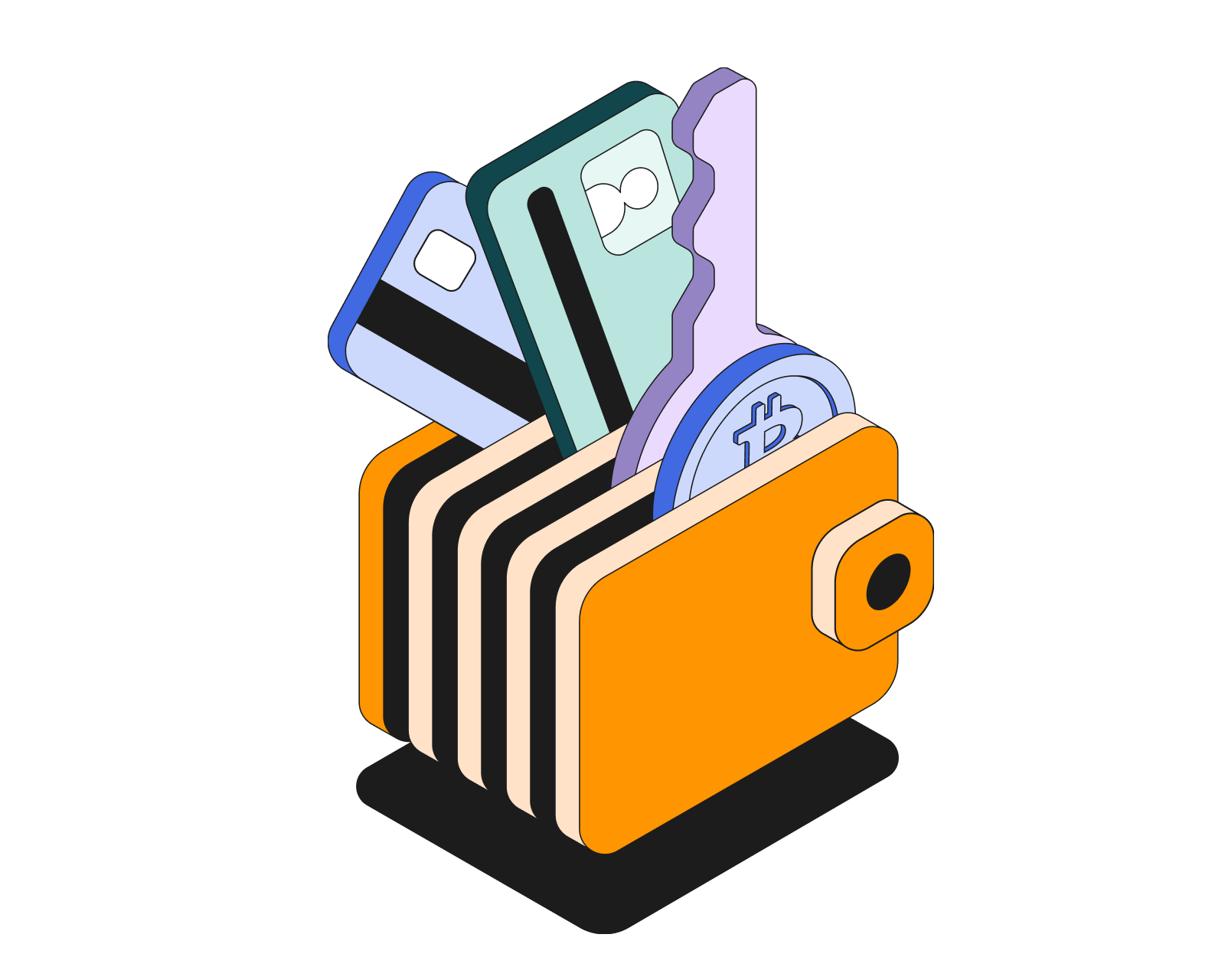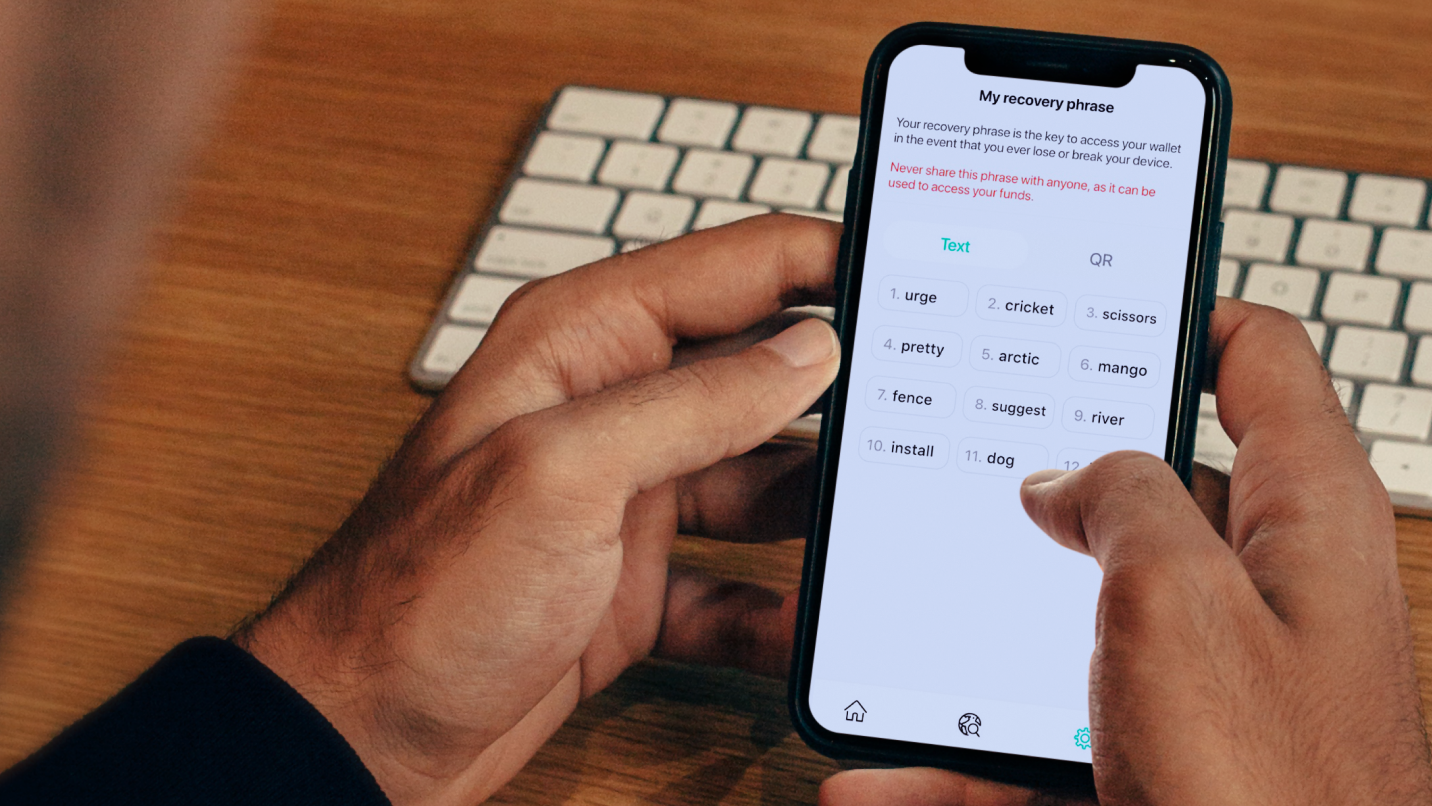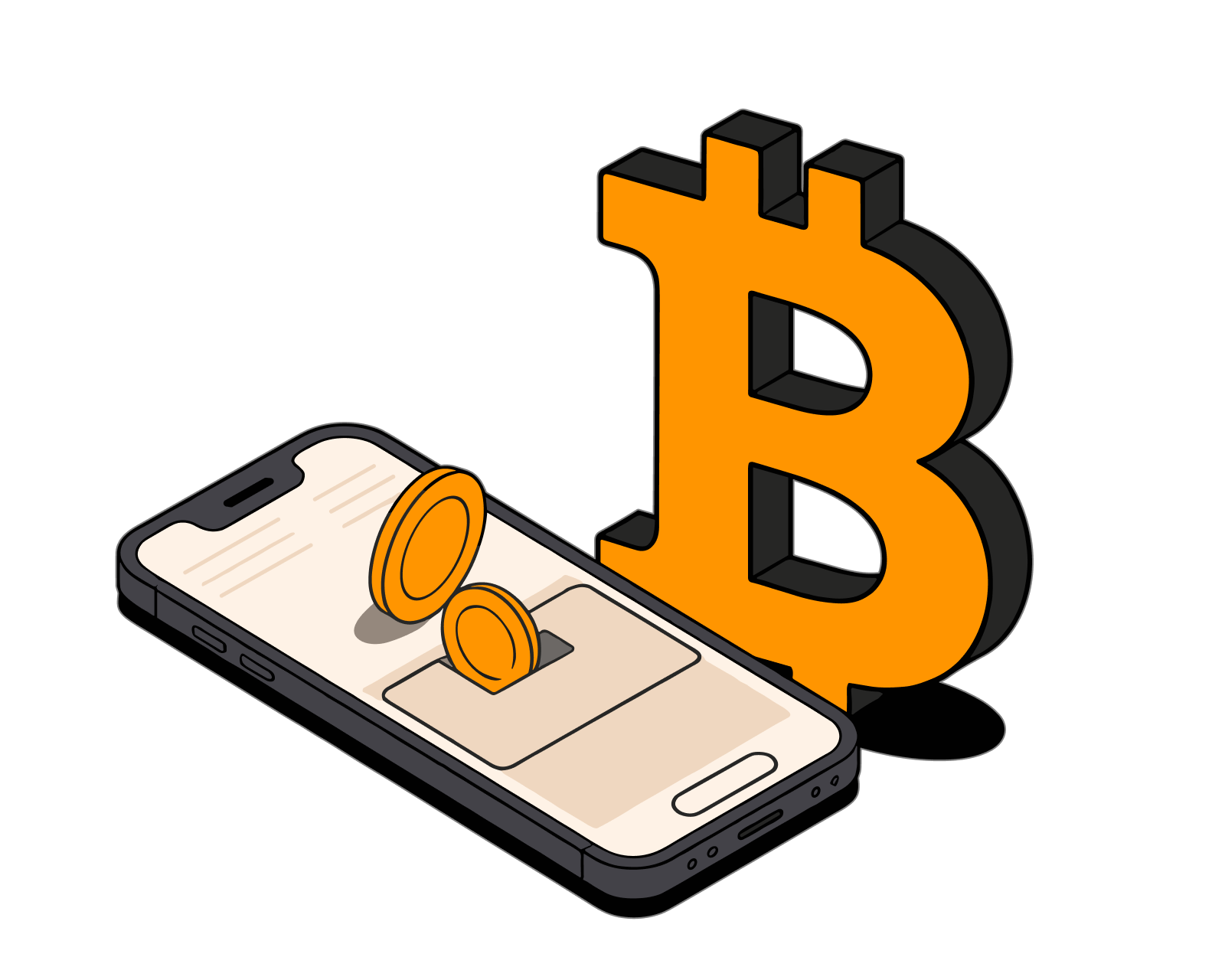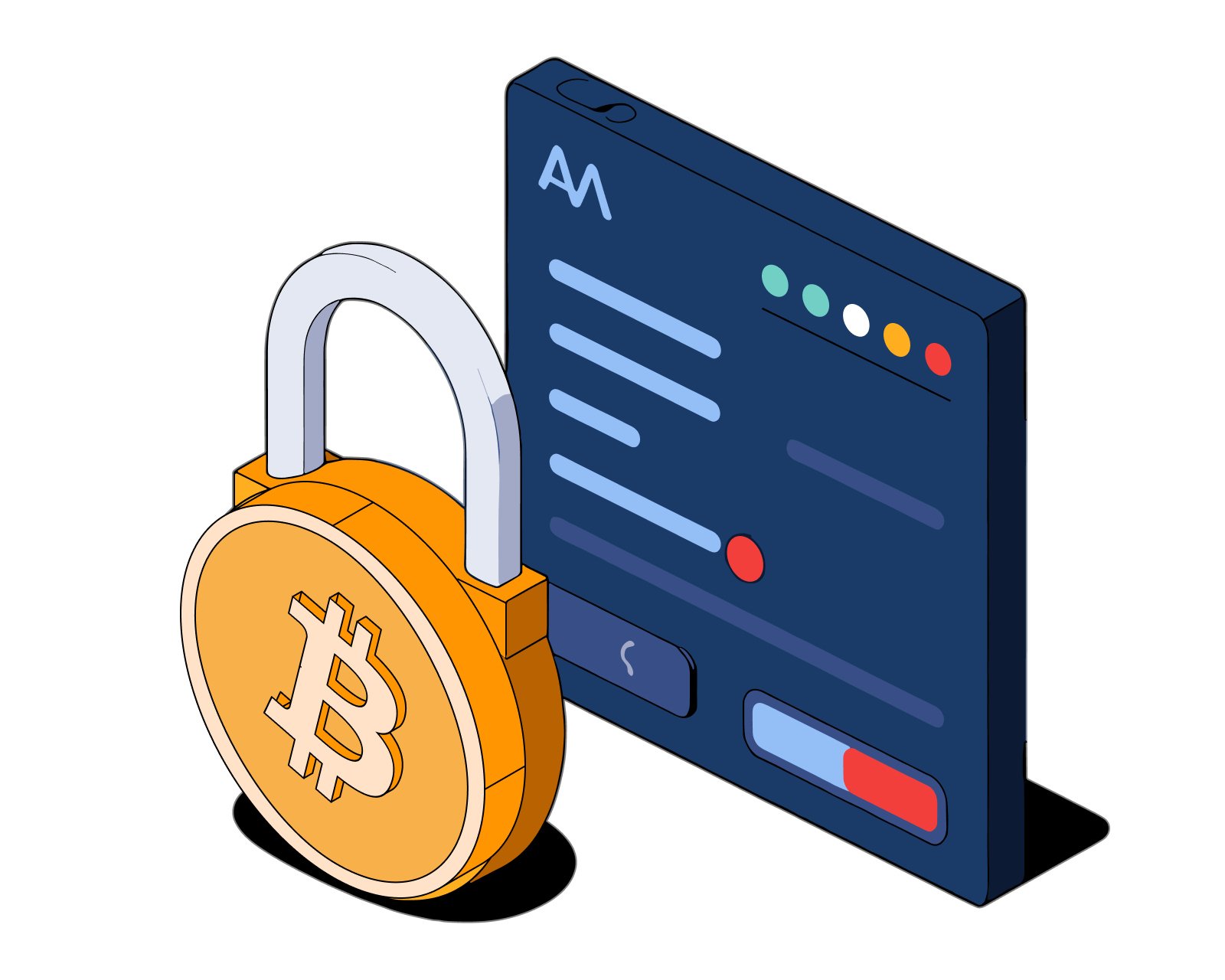What is a Bitcoin wallet?
Well, most people already have something similar to this in their physical wallets right now: a debit card. The debit card in your wallet is not money, but it does grant you access to your money. This is similar to how a Bitcoin wallet works, with a key difference being that while a debit card is controlled by a centralized entity (a bank), no person or organization controls Bitcoin. This difference means that Bitcoin wallets must function somewhat differently than bank accounts.
Read more: Get a simple introduction to Bitcoin and why it matters.

Table of Contents
How Bitcoin wallets work
Continuing with the debit card analogy from above, a Bitcoin wallet holds at least one “account," or sub-wallet. We can view this sub-wallet as being roughly equivalent to a debit card. For instance, debit cards have information associated with them, including an account number and a password. Each Bitcoin “account" within a Bitcoin wallet also has information associated with it. For our purposes, the two key pieces of information are the public bitcoin address and the private key. The public address is comparable to the debit card’s account number. The private key, meanwhile, is kind of like a debit card’s password in that it grants access to the bitcoin associated with that public bitcoin address. A private key is a 256-bit secret number. Here is an example:
108165236279178312660610114131826512483935470542850824183737259708197206310322
As you can see, this secret number is a bit unwieldy. One of the key functions of a Bitcoin wallet is to manage the private key. In fact, private keys are almost never handled directly by users. Bitcoin wallets provide a way to write down this private key in a much more human readable format, referred to as a recovery phrase, secret passphrase, or seed phrase. A recovery phrase is a list of words, usually between 12 and 24, that allow you to reconstruct your Bitcoin wallet and gain access to your funds even if your Bitcoin wallet is destroyed. Here is an example of a recovery phrase consisting of 12 words:

Because the recovery phrase is equivalent to a private key, you should never share the words with anyone, or store the plain text on your computer or online.
While the recovery phrase is an improvement upon the private key, it still leaves a lot to be desired. Since you shouldn't store your recovery phrase in plain text (unencrypted form) on your computer, for most people the best solution is to write it down on paper. This presents problems because safely storing a piece of paper can be hard. Further, if you're using a multichain wallet (like the Bitcoin.com Wallet app), you'll have a separate recovery phrase for every different blockchain your wallet supports. Storing all those recovery phrases on paper quickly becomes onerous. For this reason, the Bitcoin.com Wallet integrates an automated “Cloud Backup" system. Here you can create a single custom password and use it to unlock all of your private keys, which are stored in encrypted form in your Google or iCloud account.
To set up automated Cloud Backups in the Bitcoin.com Wallet app, just go to Settings > Backup & Security > Cloud Backup and follow the instructions.
Read more: Make sure your cryptoassets are safe with these simple tips.
Types of Bitcoin wallets
There are two main types of wallets: hardware wallets and software wallets.
Hardware Bitcoin wallets are the most secure type of Bitcoin wallet because their private keys are stored on a physical device and theoretically cannot be accessed by a computer or from the internet. When a person wishes to make a transaction, they plug in the hardware wallet (usually via USB). The hardware wallet will sign transactions without compromising the private key. The downside to hardware wallets is the cost and availability of the devices. Ledger and Trezor are well known hardware wallets.
Software Bitcoin wallets exist on computing devices, like a desktop computer, a smartphone, or in a web browser. Since computing devices run many programs or applications, they are susceptible to viruses, malware, and phishing schemes, making all software wallets vulnerable to some degree. That being said, hacking incidents are extremely rare and software wallets are generally considered safe for everyday use.
There are many software wallet choices, which can make choosing overwhelming. We welcome you to try the Bitcoin.com Wallet app, which is an easy-to-use but powerful crypto wallet trusted by millions, but we have also written several useful articles to help you navigate the process of choosing:
- How to choose the best Bitcoin wallet? With so many choices available, this article will help you weigh the key factors to consider when choosing a Bitcoin wallet.
- What is a ‘non-custodial’ wallet? The non-custodial model is important because it puts you in charge of your cryptoassets and protects you from third-party risk. If you don’t understand what that means, this article is for you.
- How do I create a Bitcoin wallet? This will help you quickly and easily create a Bitcoin wallet. This article goes into more detail about the different wallet types and their advantages and disadvantages.
Related guides
Start from here →
What is Bitcoin?
Get a straightforward introduction to Bitcoin and why it matters.
Read this article →
What is Bitcoin?
Get a straightforward introduction to Bitcoin and why it matters.

How do I buy Bitcoin?
A beginner-friendly guide to buying Bitcoin step by step, with simple explanations and common options.
Read this article →
How do I buy Bitcoin?
A beginner-friendly guide to buying Bitcoin step by step, with simple explanations and common options.

How do I create a Bitcoin wallet?
Learn how to quickly and easily create a Bitcoin wallet. Understand the different wallet types and their respective pros & cons.
Read this article →
How do I create a Bitcoin wallet?
Learn how to quickly and easily create a Bitcoin wallet. Understand the different wallet types and their respective pros & cons.

How to choose the best Bitcoin wallet
From security to fee customization options, these are the key factors to consider when choosing a Bitcoin wallet.
Read this article →
How to choose the best Bitcoin wallet
From security to fee customization options, these are the key factors to consider when choosing a Bitcoin wallet.

How do I send bitcoin?
Sending bitcoin is as easy as choosing the amount to send and deciding where it goes. Read the article for more details.
Read this article →
How do I send bitcoin?
Sending bitcoin is as easy as choosing the amount to send and deciding where it goes. Read the article for more details.

How do I receive bitcoin?
To receive bitcoin, simply provide the sender with your Bitcoin address, which you can find in your Bitcoin wallet. Read this article for more details.
Read this article →
How do I receive bitcoin?
To receive bitcoin, simply provide the sender with your Bitcoin address, which you can find in your Bitcoin wallet. Read this article for more details.

What's a 'self-custodial' wallet?
Understand how the self-custodial model puts you in charge of your cryptoassets and protects you from third-party risk.
Read this article →
What's a 'self-custodial' wallet?
Understand how the self-custodial model puts you in charge of your cryptoassets and protects you from third-party risk.
STAY AHEAD IN CRYPTO
Stay ahead in crypto with our weekly newsletter delivering the insights that matter most
Weekly crypto news, curated for you
Actionable insights and educational tips
Updates on products fueling economic freedom
No spam. Unsubscribe anytime.



Start investing safely with the Bitcoin.com Wallet
Over wallets created so far
Everything you need to buy, sell, trade, and invest your Bitcoin and cryptocurrency securely

© 2025 Saint Bitts LLC Bitcoin.com. All rights reserved


